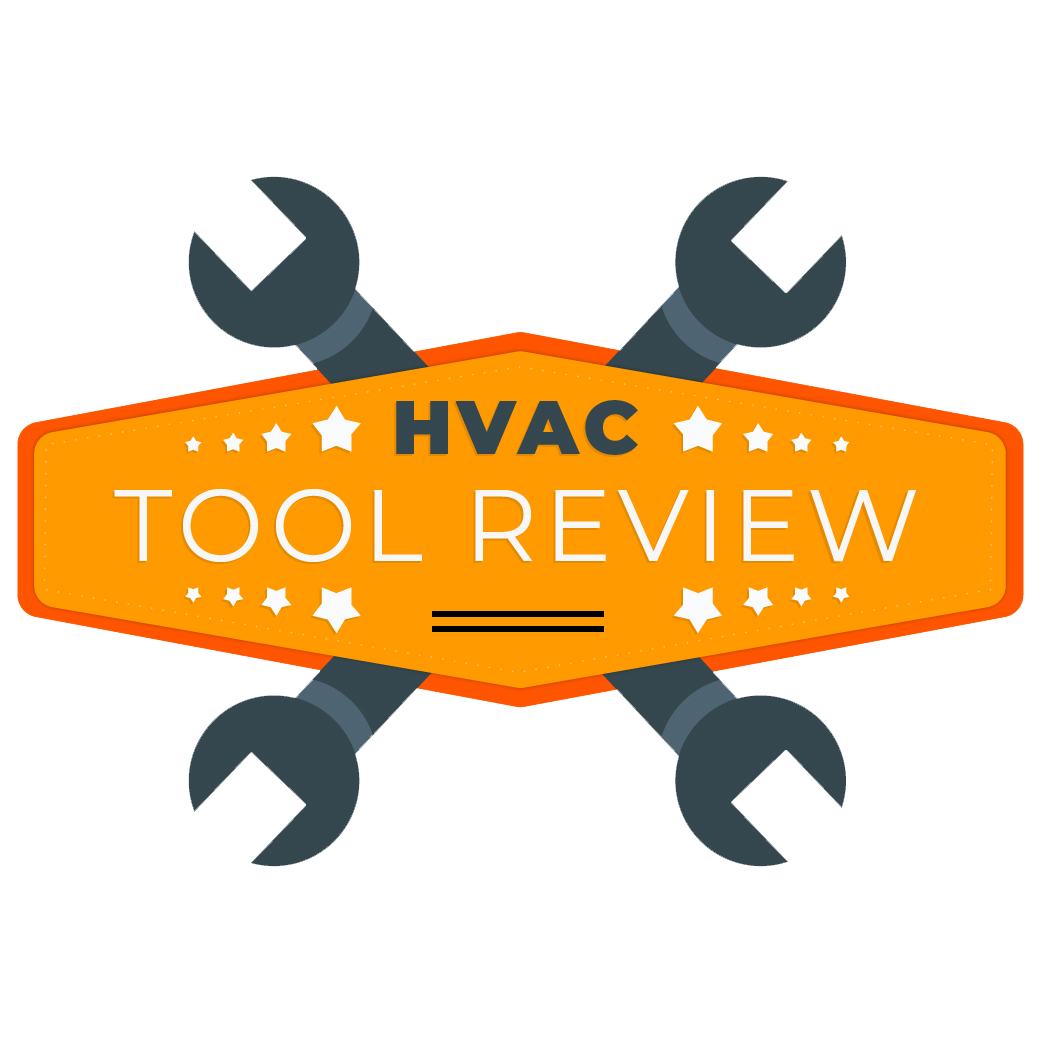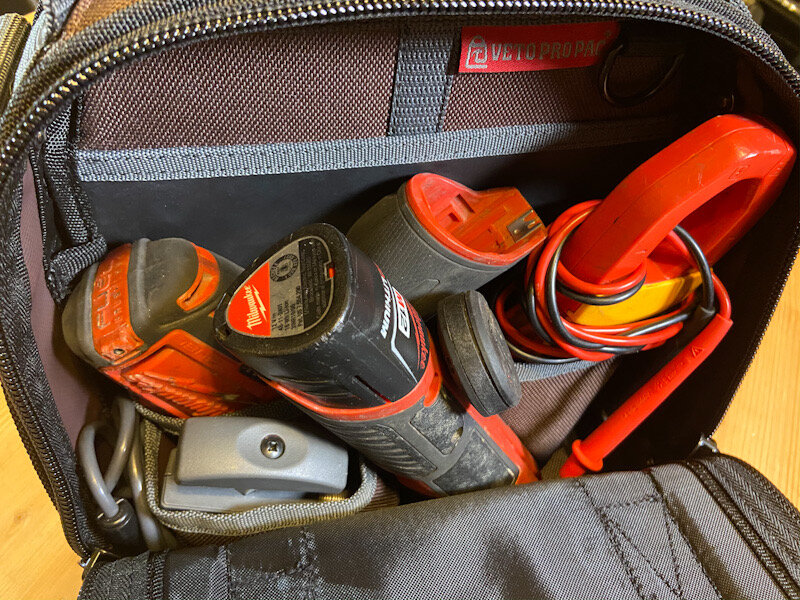What Is In your HVAC Service Tool Bag?
My Service Bag Set up
What’s in your HVAC tool bag? It’s always interesting to see how other HVAC Techs like to organize their gear, what tools they running in their bag, and how they have their service vehicle is set up. I know that I am constantly looking up content like this because you can learn a lot from other's experiences. I like to make sure I’m running in the most efficient and optimized set up. Today, I’ll share what tools I run in my service bag and the reason why they are in there.
I can honestly tell you, that it took lots of trial and error to figure out what worked best for me, and everyone’s situation will dictate a slightly different tool bag loadout depending on the equipment they work on. I’ve finally found a setup that works well for me, and I am to the point, where I prefer to keep my service bag as light as possible, while still having the ability to run the majority of service calls and maintenance work.
My current set up is actually to use multiple bags separated into “kits” if you will, for different work activity/repairs. My current setup consists of 5 tool bags. The service bag we are about to dive into is my “Everyday Carry” bag. This is the one I am going to grab for all maintenance work, diagnostic calls, etc.
My service bag of choice is currently a Veto Pro Pac MC. I think this is one of the best HVAC tool bags for service work. This tool bag is just big enough for the HVAC professional to carry all the necessary tools to perform most diagnostic and maintenance calls. The reason I prefer Veto Pro tool bags is because of their design and durability. The pockets seem that they were designed for professionals. One side consists of your normal average pockets to accommodate all of your hand tools, and the other side with larger pockets for plenty of space to carry voltmeter, drills, etc. If you are interested in picking one up, you can find them HERE (link to Amazon)
Water Gauge with Pete’s Plug - If you are performing a lot of Commercial HVAC work, you most likely will be working with hydronic water loops quite a bit, whether that be on chillers, hydronic heat pumps or boilers for domestic water or heating loops. Having the ability to tap into gauge ports is great to determine pump differentials, flows, verify a section is drained/isolated, and you can even remove the gauge and use the needle to bleed air if needed.
Belimo Serice Wrench - These actuators are usually located in the worst possible hard to reach areas, and you are rarely able to use just a deep socket. I didn’t want to carry a full wrench set in my service bag, and hardly anything I come across is metric, (besides these actuators) So its easy to just toss a Belimo combination wrench in my bag. 8mm and 10mm open-ended wrench.
Klein 4 -n -1 - As we talked about in the past article 10 Tools under $30, the 4-n-1 Klein uses a rotating tail cap, 1/8” and 3/32” slotted bits #0 and #00 Phillips bits which provides a lot of versatility when it comes to oddball control cards and T-stat terminals connections. I used to just carry one of the free “control screwdrivers” you often find at the parts house counter, but it now seems that those slotted heads are often just too wide to fit into the majority of control board terminals.
Stubby Refer Gauges - Charging manifolds are for charging. I never lug one around on maintenance and service calls. Instead, I carry these. I also carry a set of wireless probes in another bag. If you are interested in checking out a set of probes you can find that post here - Best Smart Probes for HVACR
With stubby gauges/ smart probes I can diagnose the unit and go from there. If the unit required refrigerant related repairs, I would still need to make another trip to the truck to grab a jug of refrigerant or a recovery cylinder depending on the problem.
These fit nicely in my bag, and the 90 degree low loss fittings provide the most versatility in fitting the gauges onto ports in tight places. I also run these low loss fittings on my Teso Smart Probes. You can find the low loss fittings HERE and the Glycerin filled gauges high side HERE low side HERE
Needle Nose, Wire Cutters, Wire Strippers, Channel Locks - Basic hand Tools. I Recommend purchasing decent quality tools, but not overly expensive on the hand tools. Wire cutters, strippers etc will become used and dull over the years and will likely get replaced at some point. If you go extremely cheap, these tools will not last. The metal will break and bend, channel locks won’t lock, but continuously slip. I’ve been happy with the Milwaukee tools I run, but any reputable tool manufacture should be good to go.
Insulated Screw Driver Set - These are not a necessity, but every once in awhile you will find your self in a situation where an insulated screw driver would come in extremely handy. Grab a set of Wihas and call it a day. They are not extremely expensive, and well worth it in my opinion.
Inspection Mirror - This is another one we have previously discussed. Every service tech should be running an inspection mirror. Allows you to see into those hard to reach places to determine where the refrigerant leak is coming from, if your braze filled in the back side of a coupling etc. Many uses, cheap light weight tool.
Pocket Thermometer - I typically have one of these on my person as well, but if I forget it in the truck, or leave it in a duct somewhere, I keep a spare in the bag just in case.
8” and 6” crescent - Keeping my bag light, I opted to carry these 2 crescent wrenches instead of a full set of ratcheting box wrenches. The 6” wrench allows you to get into some small spots, and the 8” Milwaukee crescent opens a little wider than other wrenches I’ve used in the past. This combo gives me a range of wrench sizes.
Fuse Puller - Cheap lightweight tool. Some guys prefer to just use a set of channel locks to yank fuses out, but I prefer to be a little more cautious, and use the right tool for the job.
Service Wrench - Important tool for service valves. Don’t use your crescent or channel locks and risk rounding off the stem.
Tool Pouch with 1/4” Drive set - This was one of my best additions to my service tool bag. Keeping a full 1/4” SAE and Metric set in my tool pouch allows a lot of flexibility in a small package. I also keep a couple of bit drivers in here for my impact. A 1/4” adapter for all the sockets, as well as a 5/16” magnetic and 3/8” magnetic bit.
Milwaukee work light - You’ve gotta be able to see, this stick light is compact, and has a magnet allowing ultimate flexibility. Plenty of light and battery life. I chose the 12v version of the light instead of the 18v for size, as well as battery interchangeability with my drill. If my battery were to die in the light, I can rob the battery from my impact.
Manometer - I carry the Testo 510 manometer because of its small size, accurate enough for troubleshooting, and has been durable. This one has been around in my bag for about 5 years, and I have had no issues. I also carry another manometer, the SDM6 that I like a little bit more, but it is also about 10 times the size of the Testo.
Temp Probes - One pipe clamp and one-touch probe. The pipe clamp allows for me to just set it and monitor temperature fluctuations of piping less than 2-1/2”, while the touch probe makes it quick and easy to take line temp readings of any surface, water lines, or any piping larger than the pipe-clamp thermocouple will allow.
12v impact - Everyone needs some type of drill and or impact driver. In the service bag, I keep the Milwaukee 12v impact. It is super small and compact, really affordable, and fits great in the Veto pro pac pockets. Using a 1/4” hex shank to 1/4” socket adapter that I keep with the 1/4” drive socket set, I can take care of the vast variety of fasteners that I come across.
Meter - The Fluke 902fc is a great all-around meter which is why I keep it in my service bag. Small profile, wireless capabilities, integrated amp clamp, and the ability to take accurate temperature readings. Previously I was using the regular 902, but with the added ability to wirelessly transmit readings to my phone, it reduces the amount of time that I am exposed to high voltage and how often I am required to wear NFP 70e gear.
Lockout Lock - All techs need to have some way to lockout a system, whether it's locking out a disconnect, gas valve, water valve, or breaker. Safety should be your number one concern every day. If you have a lock attached to your bag ready to go, you are much more likely to use it vs. having to run down to the truck to grab a lock.
What Is In your HVAC Service Tool Bag?
I’d love to hear what gear combinations you are running, and why you selected that tool. Drop a comment below and let me know!
As an Amazon Associate HVAC Tool Review earns commission from qualifying purchases






